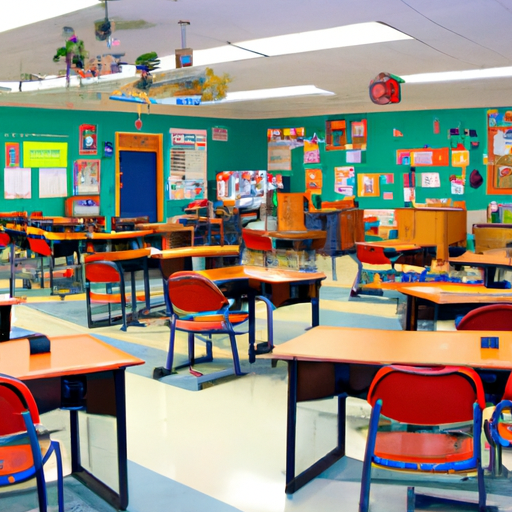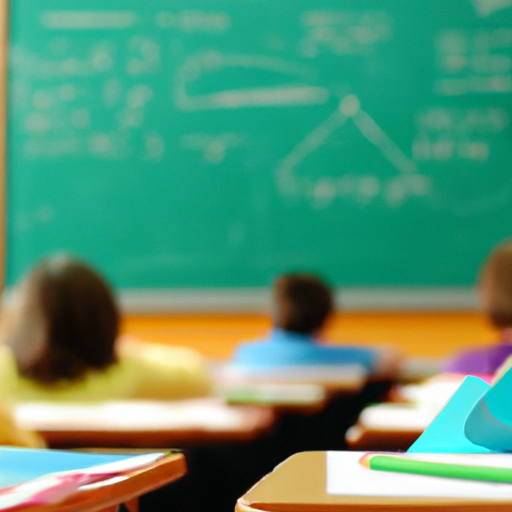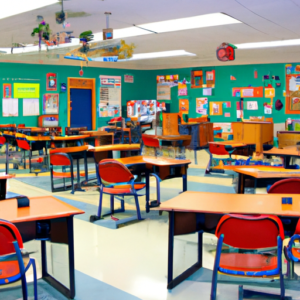Have you ever wondered about the quality of the schools in Myrtle Beach? Well, you’re not alone! Many families considering a move to the area are curious about the educational opportunities available for their children. In this article, we will dive into the topic and explore the overall quality of the schools in Myrtle Beach. By the end, you’ll have a better understanding of what to expect and how to make the best decision for your family.
Let’s start by discussing the public school system in Myrtle Beach. The schools in the area are part of the Horry County School District, which is the third largest school district in South Carolina. With over 50 schools serving a diverse population, there is a wide range of educational options to choose from. However, it’s important to note that like any school district, the quality of education can vary from school to school.
Now, you may be wondering about the academic performance of the schools in Myrtle Beach. The good news is that many schools in the area have received high ratings and accolades. Some schools have been recognized for their academic achievements, while others excel in extracurricular activities and sports. However, it’s important to research the specific schools you are interested in to get a better idea of their individual performance and programs offered.
In addition to academics, the overall school environment is also an important factor to consider. Are the teachers dedicated and passionate? Are there opportunities for parental involvement? These are just a few questions you should ask when evaluating the quality of a school. In Myrtle Beach, you’ll find a community that values education and works together to create a positive and nurturing environment for students.
In conclusion, the quality of the schools in Myrtle Beach is generally good, with many schools receiving high ratings and recognition. However, it’s important to research and visit the specific schools you are considering to ensure they align with your family’s needs and priorities. In the next article, we will take a closer look at some of the top-rated schools in Myrtle Beach and provide more information to help you make an informed decision. Stay tuned! Myrtle Beach is a popular destination for tourists and residents alike, known for its beautiful beaches and vibrant community. But what about the quality of its schools? As a parent or community member, it’s important to understand the impact of school quality on student success, property values, and the attraction of businesses to the area. In this article, we will explore the factors that determine school quality, assess the quality of schools in Myrtle Beach, compare them with neighboring districts, and examine the perspectives of parents and students. We will also discuss the investment in education, challenges and opportunities for improvement, community involvement, and the future of Myrtle Beach schools.

The Impact of School Quality on Student Success
The quality of a school plays a crucial role in determining the success of its students. Research has consistently shown that students who attend high-quality schools are more likely to perform well academically, graduate on time, and go on to college or pursue successful careers. This is why it’s important to pay attention to factors such as teacher qualifications and experience, classroom size, curriculum, and educational programs offered.
When schools have highly qualified and experienced teachers, students benefit from their expertise and are more likely to receive a quality education. Additionally, smaller classroom sizes and lower student-to-teacher ratios allow for more individualized attention and support, leading to improved student outcomes. A well-designed curriculum and access to educational programs that meet the needs of diverse learners also contribute to a high-quality education.
How School Quality Can Affect Property Values
The quality of schools in a particular area can have a significant impact on property values. Families with school-aged children often prioritize living in neighborhoods with top-rated schools, as they believe it will provide their children with the best education opportunities.
When a school district has a reputation for high-quality schools, demand for housing in that district increases. This leads to higher property values and a strong real estate market. On the other hand, if the schools in a district are perceived to be of lower quality, property values may decline, as fewer families are willing to invest in homes in that area.
Homebuyers and real estate investors recognize the importance of school quality and are willing to pay a premium for homes located in districts with top-rated schools. Therefore, maintaining and improving the quality of schools in Myrtle Beach is not only essential for the education of its students but also for the overall economic prosperity of the community.
The Role of School Quality in Attracting Businesses to the Area
The quality of schools has a direct impact on a community’s ability to attract businesses. When companies consider locating or expanding in a particular area, they often look at the quality of the local schools.
High-quality schools are attractive to businesses because they want to ensure that their employees have access to quality education for their children. Companies also recognize that a strong education system produces a skilled workforce, which is essential for economic growth and development.
By investing in the quality of schools, Myrtle Beach can create a more attractive environment for businesses, leading to job creation, increased tax revenue, and a higher standard of living for its residents.
Factors That Determine School Quality
Several factors contribute to the determination of school quality. These factors include teacher qualifications and experience, classroom size, student-to-teacher ratio, curriculum, and educational programs offered.
Teacher qualifications and experience are crucial indicators of school quality. Highly qualified and experienced teachers are more likely to provide effective instruction and support student learning.
Classroom size and student-to-teacher ratio also play a significant role in school quality. Smaller classrooms and lower student-to-teacher ratios allow for more individualized attention and support, resulting in improved student outcomes.
The curriculum and educational programs offered by a school also impact its quality. A well-designed curriculum that meets the needs of diverse learners and provides opportunities for enrichment and advancement contributes to a high-quality education.

Assessing School Quality in Myrtle Beach
To assess the quality of schools in Myrtle Beach, it is important to consider various indicators, including standardized test scores, academic performance, graduation rates, college acceptance rates, extracurricular activities, and opportunities for student engagement.
Standardized test scores provide one measure of a school’s academic performance. While they are not the sole indicator of school quality, they can provide valuable insights into student achievement.
When examining academic performance, it’s important to consider factors such as graduation rates and college acceptance rates. High graduation rates and a high percentage of students being accepted into college indicate that the school is effectively preparing its students for success after graduation.
Extracurricular activities and opportunities for student engagement are also important indicators of school quality. Schools that offer a wide range of activities and opportunities for students to explore their interests and develop their talents contribute to a well-rounded education.
Comparison with Other School Districts
To get a more comprehensive understanding of the quality of schools in Myrtle Beach, it’s important to compare them with neighboring districts and examine state and national rankings.
Comparing Myrtle Beach schools with neighboring districts can provide insights into how they stack up against their peers. This comparison can help identify areas of strength and areas in need of improvement.
Examining state and national rankings can also provide valuable information about the quality of schools in Myrtle Beach. Rankings often take into account various factors such as academic performance, graduation rates, and college acceptance rates. By comparing Myrtle Beach schools to those in other areas, it is possible to get a broader perspective on their quality.
Parent and Student Perspectives
To gain a firsthand understanding of the quality of schools in Myrtle Beach, it is important to consider the perspectives of parents and students. Interviews with parents and students can provide valuable insights into their experiences, as well as their opinions on the strengths and weaknesses of Myrtle Beach schools.
Parents and students can provide valuable feedback on a range of issues, including the quality of instruction, school resources, extracurricular activities, support services, and the overall learning environment. Their perspectives can help identify areas of improvement and inform strategies for enhancing school quality.
Investment in Education
Investing in education is essential for maintaining and improving the quality of schools in Myrtle Beach. This includes funding and allocating resources to schools, as well as efforts to improve school facilities and technology.
Funding plays a crucial role in providing schools with the resources they need to deliver quality education. Adequate funding ensures that schools can attract and retain highly qualified teachers, provide necessary materials and resources, and offer enriching extracurricular activities.
Efforts to improve school facilities and technology are also important for enhancing school quality. Up-to-date facilities and technology create a conducive learning environment and provide students with the tools they need to succeed in the modern world.
Partnerships with local businesses and community organizations can also contribute to the quality of schools. By collaborating with these entities, schools can access additional resources, expertise, and opportunities for students.
Challenges and Opportunities for Improvement
While Myrtle Beach schools may have strengths, they also face challenges and opportunities for improvement. Addressing socioeconomic disparities in education is one of the key challenges that schools must tackle.
Socioeconomic disparities can significantly impact the quality of education that students receive. Students from lower-income families may face barriers to accessing quality resources and opportunities. Schools must implement strategies to bridge these disparities and ensure that every student has an equal chance at success.
Supporting special education and addressing the diverse learning needs of students is another important challenge. Students with special needs require individualized support and accommodations to thrive academically. Schools must invest in specialized programs and services to meet their unique needs.
Incorporating innovative teaching methods and technologies also presents an opportunity for improvement. Education is constantly evolving, and schools need to embrace new approaches that engage students and prepare them for the future.
Community Involvement in Education
Community involvement plays a vital role in the success of schools. When parents, community members, and businesses are actively engaged in supporting schools, it strengthens the overall educational experience.
Volunteer programs and initiatives are one way for community members to get involved in education. By volunteering their time and talents, individuals can make a meaningful impact on the quality of education students receive.
Parent-teacher associations (PTAs) provide opportunities for parents to engage in school decision-making and advocate for their children’s needs. PTAs can play a crucial role in ensuring that the voices of parents and community members are heard and that schools are responsive to their concerns.
Collaboration with local universities and educational institutions can also enhance the quality of education. By partnering with these organizations, schools can access resources, expertise, and opportunities for professional development.
The Future of Myrtle Beach Schools
The future of Myrtle Beach schools holds many opportunities and challenges. Initiatives and plans for future improvements will play a key role in shaping the quality of education in the area.
Setting goals for academic achievement and student success is essential for ensuring that schools are continuously striving for excellence. By setting clear objectives and measuring progress, schools can track their achievements and make data-driven decisions to improve student outcomes.
Anticipated challenges, such as addressing socioeconomic disparities and supporting diverse learning needs, require strategies and action plans. Schools must collaborate with stakeholders, including parents, community members, and businesses, to overcome these challenges and create an inclusive and equitable education system.
Looking ahead, the continued investment in education will be crucial. By allocating resources and funding to schools, Myrtle Beach can ensure that its students receive a top-quality education. Community involvement will also be key, as active participation from parents, community members, and businesses helps create a supportive and enriching learning environment.
Conclusion
In conclusion, the quality of schools in Myrtle Beach is of utmost importance for the success of students, property values, and the attraction of businesses to the area. Several factors, including teacher qualifications, classroom size, curriculum, and educational programs, determine school quality.
Assessing school quality in Myrtle Beach involves examining indicators such as standardized test scores, academic performance, graduation rates, college acceptance rates, and extracurricular activities. Comparing Myrtle Beach schools with neighboring districts and considering state and national rankings provides further insights.
Parent and student perspectives offer valuable insights into the strengths and weaknesses of Myrtle Beach schools. Investment in education, challenges and opportunities for improvement, and community involvement are critical for enhancing school quality.
By addressing challenges, investing in education, and actively involving the community, Myrtle Beach can ensure that its schools provide a high-quality education that prepares students for success in the 21st century. The future of Myrtle Beach schools depends on continued commitment to excellence, collaboration, and the shared goal of providing every student with a quality education.
